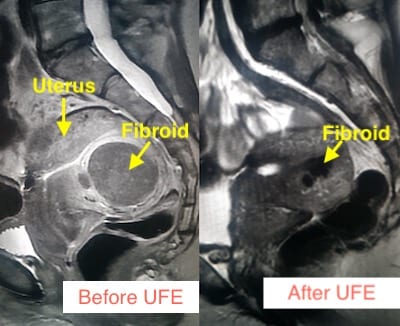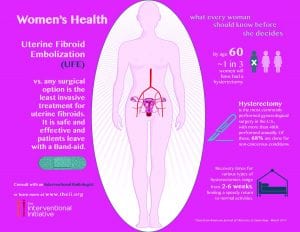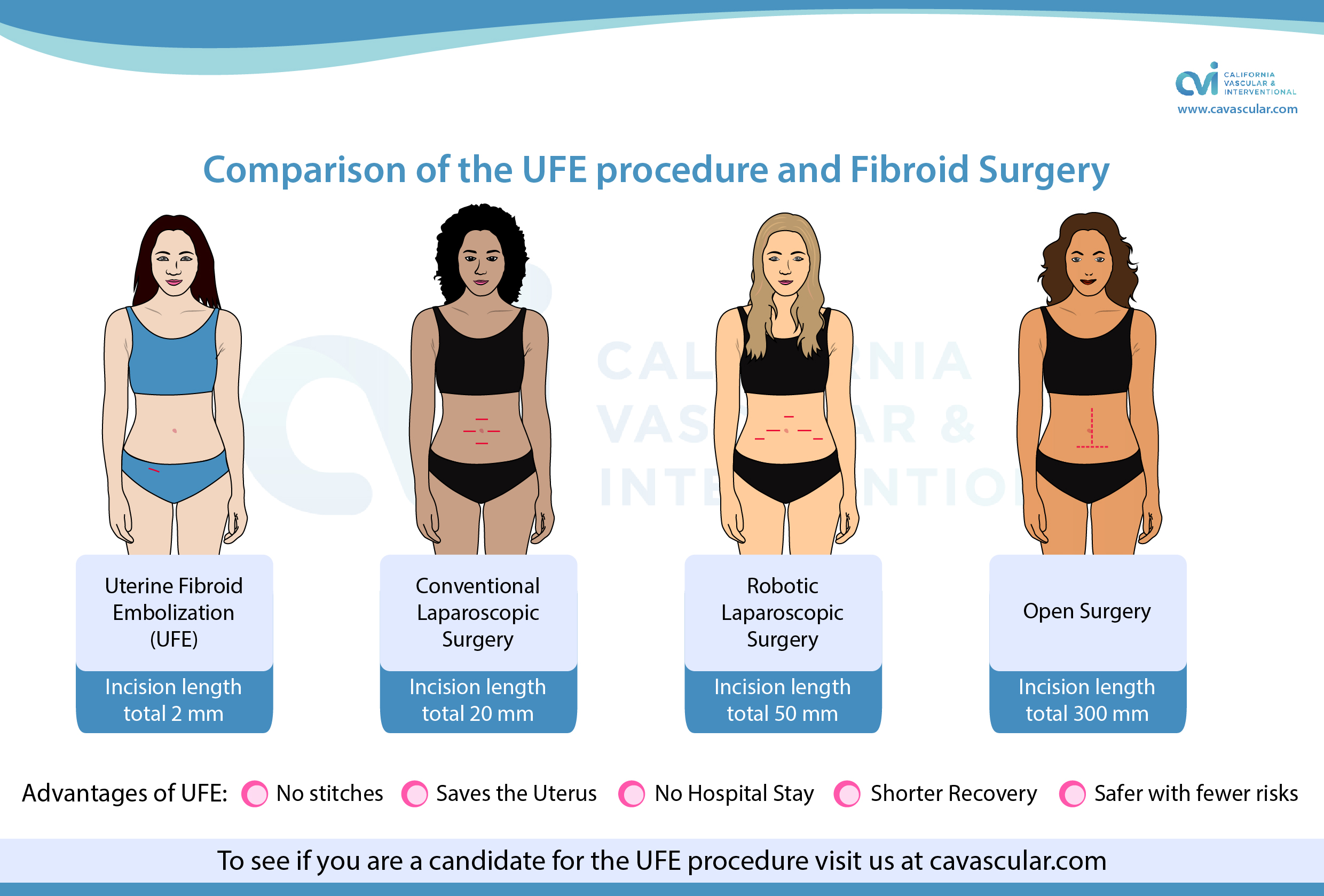
Virtual remote appointments are available. Contact us for a video telehealth evaluation.

All appointments conducted by our Board Certified doctor and not assistants or non-physician providers.
Choosing a Uterine Fibroid Embolization Center
This is just as important as discovering the procedure itself!
If you live in a metropolitan area you have many options, including national corporate medical centers, hospitals, multi-specialty clinics, and a dedicated embolization center like ours.
Briefly, uterine artery embolization is a minimally invasive outpatient procedure that is highly effective for treating uterine fibroids and uterine adenomyosis while preserving the uterus. So where should you book your procedure?

Large corporate businesses tend to have offices throughout the nation. This is great if you have limited access to a fibroid specialist, but national corporate medical centers are owned and managed by business executives and other shareholders who value profits more than patient care. Patients often feel rushed and could be neglected before, during, and after the treatment.
A hospital is another option. In fact, interventional radiologists learned fibroid embolization in the hospital setting, also known as an academic teaching center. While this maybe a good option, the downside is that the focus of hospitals is to provide emergency and urgent care, and often have daily rotations of doctors and nurses in training. Not to mention very sick patients that you will be exposed to during your stay. Furthermore, UFE is one of the least performed procedures by interventional radiologists in hospitals. This is due to the fact that their days in the hospital are usually filled with other types of urgent and emergency cases, which can cause delays and disruptions.
A multi-specialty clinic employs physicians, nurses, and support staff with different areas of expertise and appears to be an attractive option. However, profit-sharing distributions are weighted to favor specialties with higher profits, which encourages underperforming doctors to boost patient volume at the expense of patient care.
Why California Vascular & Interventional?
At CVI, we provide devoted and specialized care for treating uterine fibroids. All clinical decisions are centered on the patient because CVI is owned and controlled by our physician, who is an embolization expert. The doctor has the freedom to spend as much time as needed for patient consultations and medical procedures. Clinical decisions are made based on what is best for you and your treatment, and not influenced by the interests of a profit-driven hedge fund company. The staff are highly trained and dedicated to the patient experience. This allows us to provide the best care and experience for our patients.
Women continue to be thrilled with the totality of their care experience facilitated by our patient-centered approach. Read more about our practice here.
Patient Centered. Dedicated. Comprehensive.
Contact us today to find out if you are candidate for fibroid embolization. You can obtain a consultation virtually via a video telehealth platform or meet our doctor in person at one of our office locations in Los Angeles or Southern California.
Choosing a Uterine Fibroid Embolization Center is just as important as discovering the procedure itself!
If you live in a metropolitan area, you will have your choice of large national corporate businesses, hospitals, academic teaching centers, multispecialty offices and dedicated interventional centers like ours.
Large corporate business tend to have offices throughout the nation. This is great if you have limited access to a fibroid specialist but rest assure that a lot of national practices are run like a business and every minute is a cost.
Interventional Radiologists trained and learned fibroid embolization in the hospital setting, also known as an academic teaching center. While this is still a good option, the downside is that most hospitals can have rotating and per diem staff and nurses. Having a dedicated staff who has continuous familiarity with the procedure is paramount for good patient experience. Additionally, fibroid embolization is the least common procedure performed in the hospital as the days are usually filled with other types of urgent and emergent cases, which can cause delays and disruptions.
A multispecialty office is a practice where different types of specialists in one place, and together they control and make decisions regarding the direction of the practice and thus the experience of the patient. While this sounds ground, there cam be conflicting interests and financial issues prohibiting delivering the best experience for patients. Decisions can be made based on the bottom line as productivity of different specialists is often compared to encourage more output.
At CVI, what makes us different is that we are a physician owned and controlled. We are a dedicated practice in providing image-guided interventional treatments. The direction of the practice is curated based on patient and staff experience and feedback. Clinical decisions are made based on what is best for you and your treatment, and not confounded by interest of a business manager or hedge fund company looking to make a profit. The staff is highly trained in each particular treatment and dedicated to providing the personalized care that each patient requires. Neither consultations nor procedures are rushed. The doctor has the freedom to spend as much time as required with each patient, a luxury essentially non-existent in other corporate medical practices. The interest of our practice and physician is aligned with those of the patient, providing the best care and experience possible.
Contact CVI today to find out if you are candidate for fibroid embolization.


